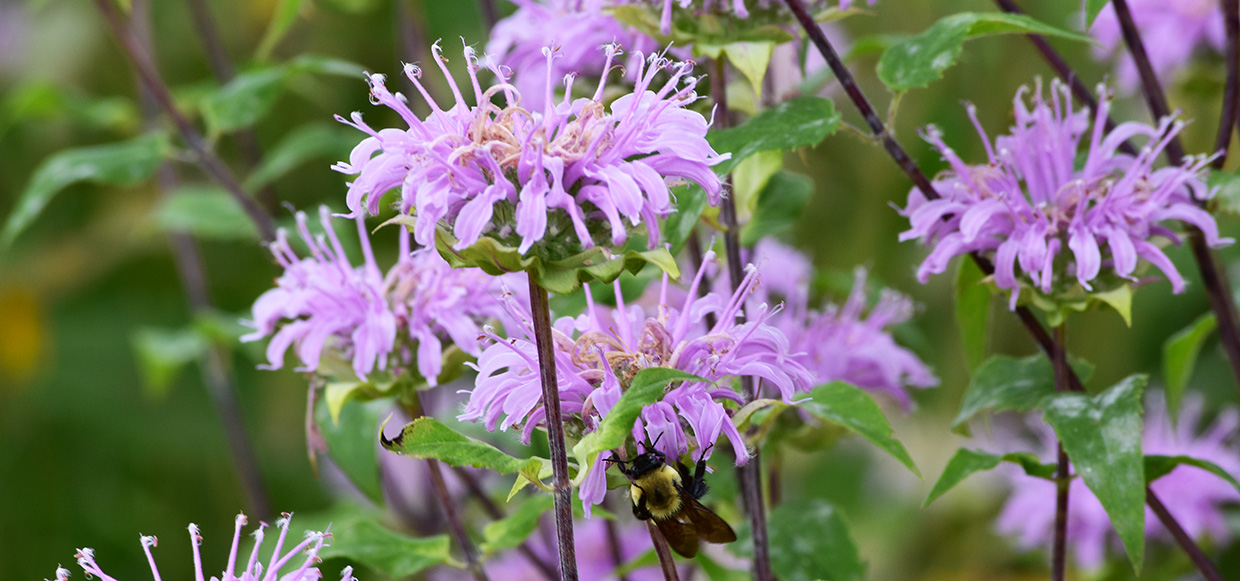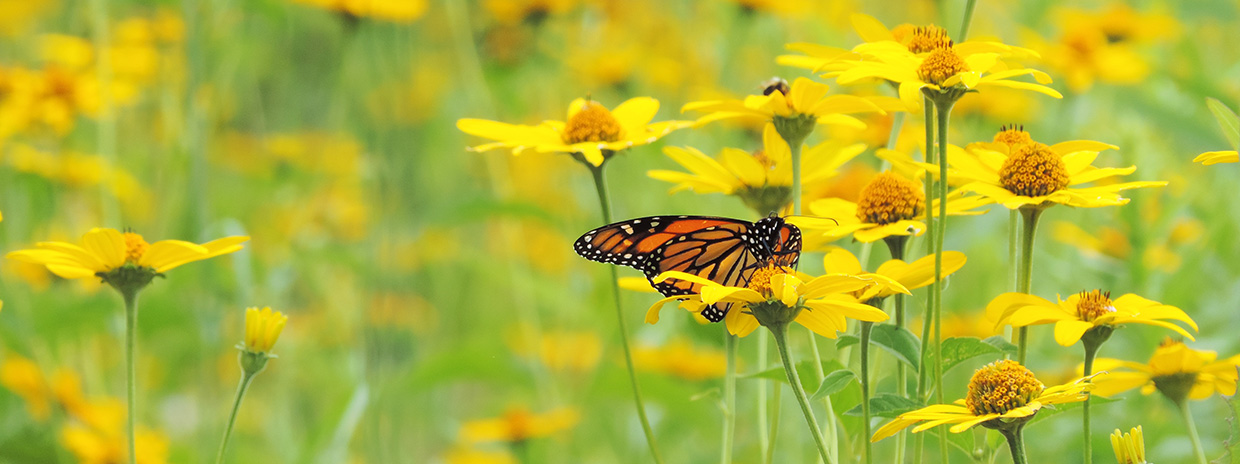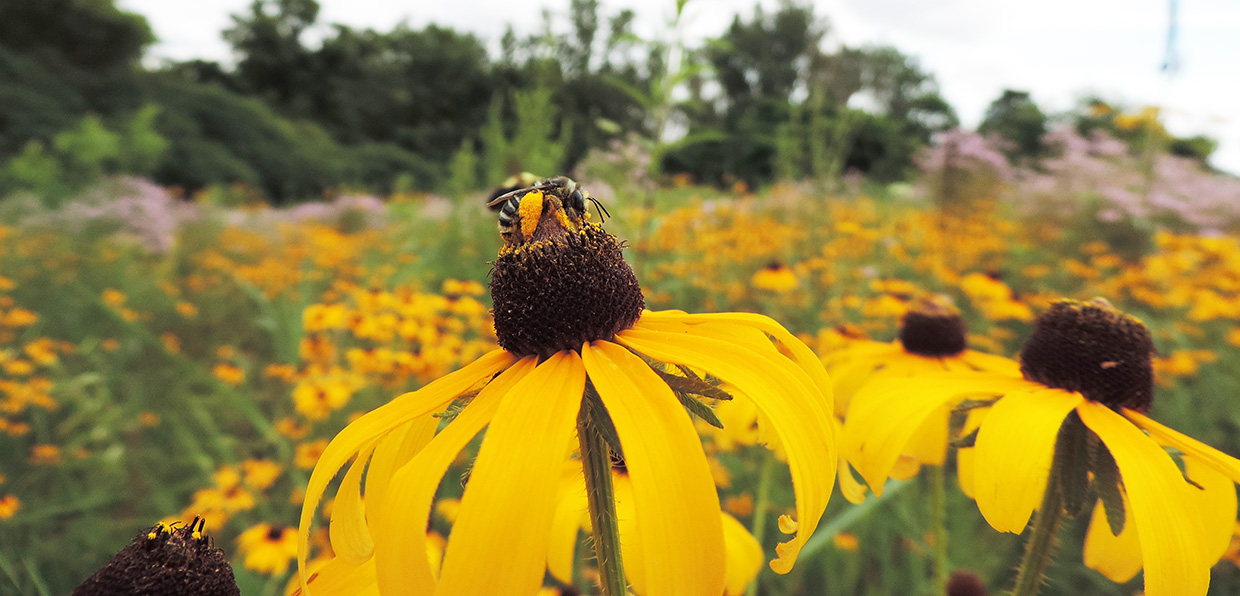
A Passion for Pollinators
By Restoring Meadow Habitat, We’re Giving Native Species a Chance to Flourish
Posted May 26, 2020
Hello everyone!
My name is Jennifer Smith, and I am the Restoration Coordinator for The Meadoway.
I’m part of the team working to restore this 16 km stretch of hydro corridor into a biodiverse meadow habitat!
I have a real passion for pollinators. It was my growing concern about the decline in native pollinators that actually led me to environmental planning and meadow restoration for my graduate studies.

Meadows and prairies are excellent habitat for pollinators, and the loss of this habitat is one reason why pollinators are in decline. Did you know that less than 1% of Canada’s tallgrass prairie ecosystem remains today?
Creating wildlife habitats in urban spaces has particular challenges. Where do you find the room?
Using a hydro corridor as a footprint for The Meadoway is a creative response to this problem. It’s a win-win-win for wildlife, the local community, and the city’s ecosystem.

At one point In my quest to help pollinators, I took a beekeeping course. It was an incredible learning experience! (Did you know that bees can’t see the colour red? It appears black to their eyes!)
One fact I quickly learned is that the honeybee is not a species native to Ontario — it originated in Europe. This made me realize that getting into beekeeping would not benefit our native pollinators.
Honeybees are highly efficient, successfully out-competing native bee species in foraging for nectar. Simply put, they take precious food resources from native bees. This was an important lesson — one I now work to pass on to others.

If you’re really looking to help our native bees, you can do so by planting native wildflowers in your garden and supporting organic farming. This provides food, shelter, and nesting habitat for pollinators.
Any space will do for planting native wildflowers — it can be as small as your backyard or as large as The Meadoway!
One of the best aspects of my job is doing site visits and events. I help coordinate engagement experiences in The Meadoway for various groups, sharing with others how fascinating meadow ecosystems truly are.
My work allows me to share my love of creating spaces for wildlife, exactly where it’s needed most, and pass on this enthusiasm to others!
FAST FACT: Did you know that many solitary native bees do not have stingers? For those species that do have stingers, it is in fact part of a female bee’s anatomy.

Posted by Jennifer Smith
Jennifer Smith is the Restoration Coordinator for The Meadoway at Toronto and Region Conservation Authority (TRCA).

